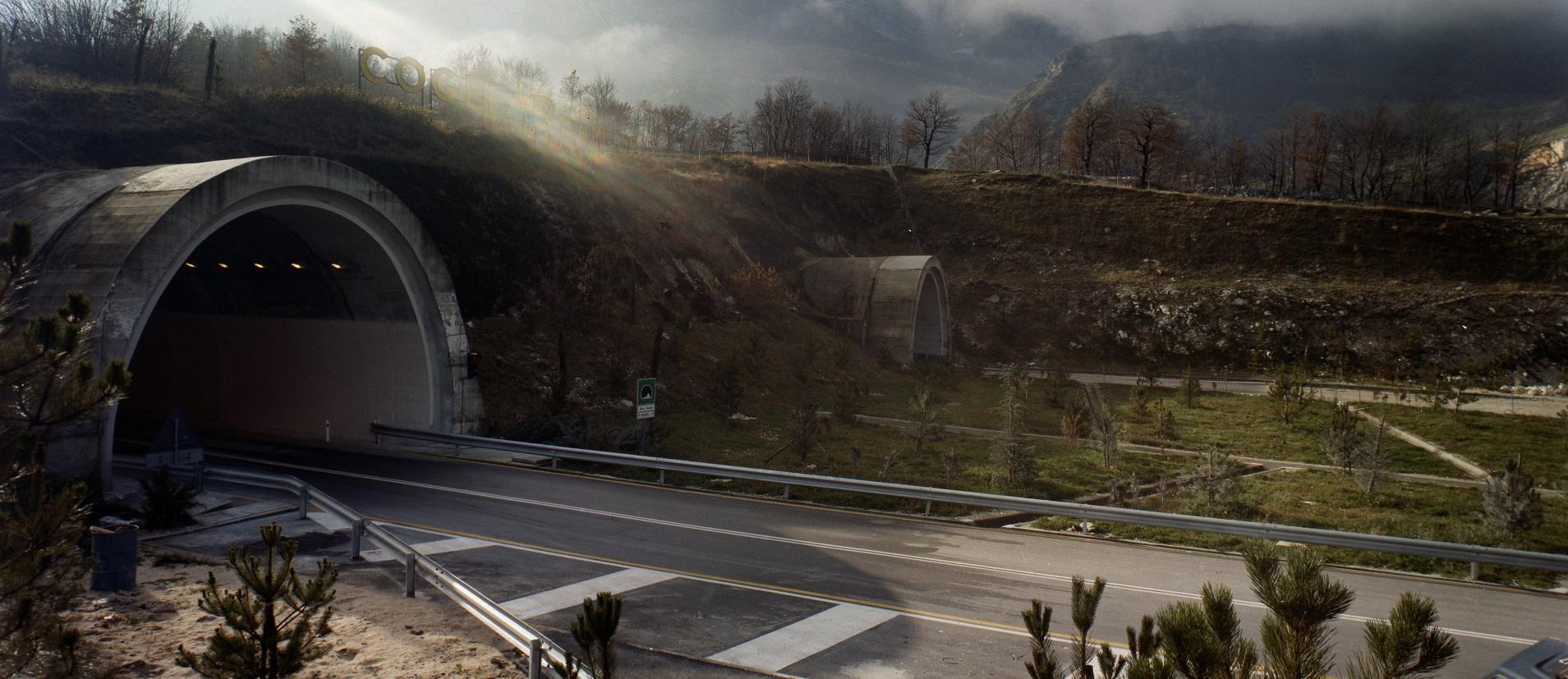Gran Sasso Highway Tunnel

Its construction is structured around the realization of the A24 highway where it stands.
The highway is developed over 10,000 meters and is one of the few tunnels in Europe with a double-arched length. The two tunnels, which are beside each other, are connected by short transversal tunnels (by-passes) equipped with fire doors, with a distance between them varying from 400 to 800 meters.
The Gran Sasso highway is a work of exceptional complexity, for its technical characteristics and geographical difficulties. The 10 km of the highway runs below the highest peaks of the Apennines, from Pizzo Cefalone to Corno Grande, which has an altitude of almost 3,000 meters. The road on the left is 10,121 m long, while the one of the right is 10,175 meters. A service tunnel was created in the last 2.5 km in the direction of Teramo in the wheelbase of the two main tunnels, 14 m deeper down.
While the highway reached completion, the scientific community actively involved in studying the composition of materials, realized that the enormous cavern created below the mountain during the tunnel's construction could be used for scientific research. With this in mind, in 1981, the government decided to create one of the largest and most important subterranean laboratory in the world: the Laboratori Nazionali del Gran Sasso (LNGS), entrusted to the National Institute of Nuclear Physics (INFN).
Client: A.N.A.S.
Main Technical Data:
Lenght 10,175 m (right way) – 10,121 m (left way)
Service tunnel 2.628 m
Assergi side 958 m above sea level
Casale side 889 m above sea level
Maximum overburden 1,380 m
Excavation 1,770,000 m3
Concrete 640,000 m3
Reinforcement 19,200 tons
Drawoff pipes 17,300 m
By-passes 18